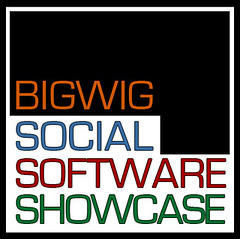 After thinking a bit more on the conference issue, and reflecting on discussions I had with Michelle Boule at Internet Librarian, there’s another piece to the revenue puzzle that is worth considering. Warning: more numbers ahead.
After thinking a bit more on the conference issue, and reflecting on discussions I had with Michelle Boule at Internet Librarian, there’s another piece to the revenue puzzle that is worth considering. Warning: more numbers ahead.
Let’s assume, for a moment, that everyone going to ALA Annual preregisters. Not true, but we’re looking for rough numbers here. Pre-reg pricing for ALA members is currently $175 per person. Sure, there’s a lot of student registrations ($85), but I’m betting there’s a lot of those $260 registrations as well, so let’s just use the $175 as an baseline number.
Library Journal reported 21,466 registrants and 7169 exhibitors at the 2007 Annual. Through the power of mathematics, that gives us $3,756,550 just from registration for Annual. That doesn’t take into account the exhibitors ($19.50 per square foot of floor space, plus $.50 per square foot just to fund the opening reception…$150 for each open corner of your booth, minimum booth size 10’x10′). If we just use the planning document, we get 1243 booths at a total square footage of 160,800. This means we’ve got a total revenue from the exhibit halls of about $3,135,600.
Total revenue for ALA Annual, projected: $6,892,150
This may fluctuate some, of course…Annual last year in DC was a record-breaking year, and Anaheim might not bring as many people. We’re just looking for rough numbers here.
We’ve got gross numbers. Now we need net. Here’s where we enter the realm of complete guesswork. There is a cost associated with the space for all this. Hotels need to be paid for conference rooms, food during breaks needs to be paid for, audio/visual setups are a huge expense, etc. Of each individual registration, some percentage goes to pay for these items.
What’s a fair percentage to guess? Is it…50% of the registration? It easily could be. Let’s be very, very generous to the ALA and say that 75% of the amount the average librarian pays goes directly to pay for conference services. If that’s true, $131.25 of every registration pays for actual hard costs of the event, leaving the ALA $43.75 in the black.
Let’s assume that the exhibit hall is a complete wash, and it covers itself with no profit left over.
If all of these almost-certainly-false things are true, the ALA makes just under a million dollars ($939,137.50, to be exact) in profit on ALA Annual. A million dollars isn’t, frankly, a lot of money to an organization like the ALA, but it is a hefty payday regardless. We can see why the ALA may be frightened of virtual membership cutting into this profit center.
Until, of course, we realize that in order to recoup any lost revenue from virtual memberships that don’t go to Annual, ALA only has to capture $50 from each missing attendee. If they could offer $50 worth of content to a virtual participant, charge them appropriately, they would actually make more money than they do from the attendees of the conference.
“But!”, you say to me, “What if the actual costs per person are much less to the ALA, and they actually make a much higher percentage of profit from the registration fees?”
I think that the market would bear a considerable higher cost of virtual membership, especially since there would be no secondary costs incurred by the participant (hotel charges, flights, etc). I also think it would be unwise of ALA to admit this, since otherwise it is hard to justify the cost of attendance other than through sheer greed. If the actual percentage of profit is less, then obviously the cost per virtual participant could be lowered, and the profitability maintained.
If the largest library organization can’t find a way to provide $50 worth of content on the web, I think we may all be in bigger trouble than a few numbers could solve. Hell, the BIGWIG Social Software Showcase content by itself was worth $50.
My prescription for the ALA:
- Get this virtual membership thing worked out. Virtual members should be just exactly like every other membership type…this is the freaking 21st century. All of your new librarians are virtual in some way all the time. The 19th century model of F2F being necessary is just broken beyond repair at this point because our tools have eliminated the need.
- Put together a formal method of collecting and distributing podcasts, vodcasts, and text summaries of conference happenings. It’s already being done by your constituents, you should be able to do it as well. Charge for real-time access and a one-month window (and provide back-channel communications with the presenter and panel in real-time), then open the whole bunch of content under a Creative Commons attribution-noncommercial license and let the world have it. Work out a deal with the Internet Archive for hosting and distribution.
- Profit.
 After returning from Internet Librarian, I’ve been thinking a lot about conference models and how the ALA and library conferences in general need to change in order to survive the next 5-10 years. The existing ALA model is broken beyond repair, and while I know that the ALA has a task force on virtual membership working now, there needs to be a much wider look at the virtual aspects of conferences than just focusing on how membership works.
After returning from Internet Librarian, I’ve been thinking a lot about conference models and how the ALA and library conferences in general need to change in order to survive the next 5-10 years. The existing ALA model is broken beyond repair, and while I know that the ALA has a task force on virtual membership working now, there needs to be a much wider look at the virtual aspects of conferences than just focusing on how membership works.